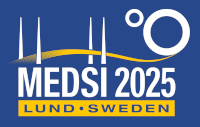Speaker
Description
Wiggler sources thermally challenge mirrors particularly when multiple reflection angles are required for variable energy cutoff. A newly installed vertically deflecting collimating mirror at SLAC-SSRL utilizes longitudinally variable conductivity between the cooling water and the mirror, strategically remapping the Gaussian heat bump to produce a spherical thermal deformation that can more effectively be eliminated by adjusting the end moments. By simultaneously optimizing the contributions of both static conductivity and adjustable bending, sub-microradian figure error was achieved. The design utilized a bounded value least squares method incorporating the effects of incremental conductivity changes to each segment of the cooling interface and end moments at each of three required thermal conditions while weighting the local error by the useful reflected flux contribution. Used iteratively, this method converged on the optimal geometry of the copper cooling blades conducting heat from the gallium indium filled troughs along either side of the optically active mirror region to the cooling water tubes.
Funding Agency
US Department of Energy

